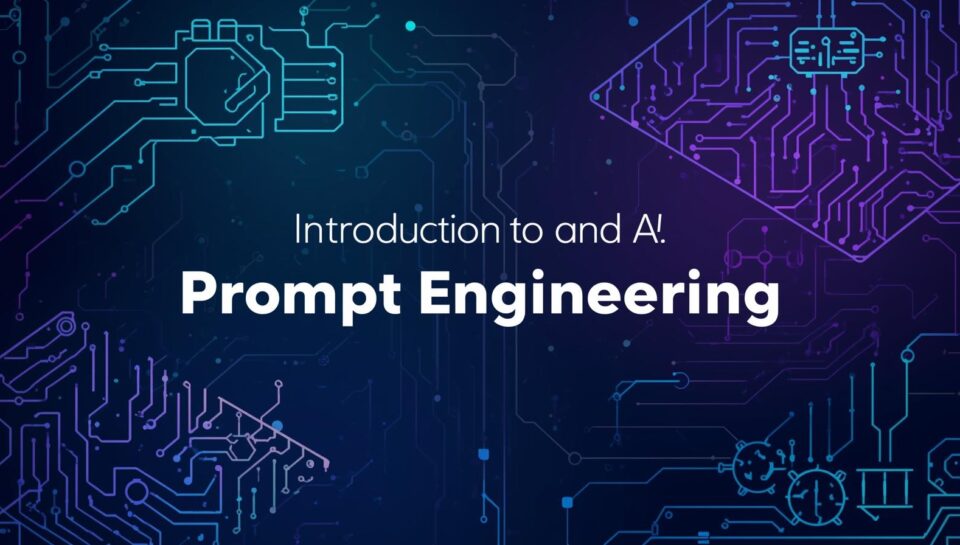
Introduction to AI & Prompt Engineering
Overview
This lesson introduces you to the fundamentals of Artificial Intelligence (AI) and Large Language Models (LLMs). You will learn how AI systems think, how LLMs generate text, and why prompt engineering is a crucial skill to guide AI effectively. By the end, you’ll understand the building blocks of AI and the role of prompts in generating meaningful outputs.
💡 Key Concepts
- Artificial Intelligence (AI): AI is the simulation of human intelligence in machines that can perceive, reason, learn, and act.
- Intelligent Agents: Entities that perceive their environment through sensors and act upon it to achieve goals.
- Large Language Models (LLMs): Advanced AI models trained on massive datasets to understand and generate human-like text.
- Prompt: The input or instruction given to an AI model to guide its output.
- Prompt Engineering: The practice of designing high-quality prompts to get accurate, useful, or creative outputs from LLMs.
🧠 Concept Explanation
1. What is AI?
AI is all around us—from chatbots and recommendation engines to self-driving cars. At its core, AI is about building systems that can perform tasks which normally require human intelligence, such as:
- Understanding natural language
- Recognizing images or speech
- Making decisions under uncertainty
- Learning from experience
AI is built on a combination of logic, probability, algorithms, and data, enabling machines to simulate intelligent behavior.
2. Intelligent Agents
An intelligent agent interacts with its environment through perception (input) and action (output). For example:
- A thermostat perceives temperature and adjusts heating.
- A chatbot perceives a user’s query and responds with text.
Rational agents aim to maximize their performance based on the information available and their goals.
3. Understanding LLMs
LLMs are AI models that specialize in understanding and generating text sequences. They are trained on billions of sentences and learn patterns, grammar, and context. Key points:
- Predictive nature: LLMs generate text one token at a time, predicting the next token based on the previous ones.
- Auto-regressive modeling: Each predicted token is added to the input sequence for the next prediction.
- Applications: Summarization, translation, question-answering, code generation, chatbots.
4. The Role of Prompts
A prompt is your way of instructing the AI. The clearer and more structured the prompt, the better the AI’s response. Poorly designed prompts can lead to vague, irrelevant, or inaccurate outputs.
Example:
Prompt: "Write a poem about AI."
Output: A simple, short poem about AI concepts.
Prompt: "Write a four-line rhyming poem explaining how AI learns from data, suitable for beginners."
Output: A detailed, beginner-friendly poem with clear examples.
5. Why Prompt Engineering Matters
Prompt engineering is essential for guiding AI:
- Ensures accuracy and relevance
- Controls style, tone, and output format
- Enables complex reasoning through structured instructions
- Reduces ambiguity in AI-generated responses
Even if you’re not a programmer, anyone can learn prompt engineering, making it a powerful skill in today’s AI-driven world.
🧩 Practical Beginner Examples
- Simple Question-Answering:
Prompt: "What is AI in simple words?"
AI Output: "AI is the ability of machines to perform tasks that normally require human intelligence."
- Basic Summarization:
Prompt: "Summarize this paragraph in one sentence: [Insert paragraph]"
AI Output: A concise, clear one-sentence summary.
- Role-Based Prompting (Beginner-Friendly):
Prompt: "You are a teacher. Explain photosynthesis to a 10-year-old."
AI Output: A simple, child-friendly explanation of photosynthesis.
⚙️ Beginner Tools
- OpenAI Playground / ChatGPT: For experimenting with prompts.
- Google Vertex AI Playground: Access Gemini models with configurable parameters.
- Replit or Jupyter Notebook: Run simple Python scripts to test prompts and outputs.
🧭 Step-by-Step Beginner Activity
- Open ChatGPT or a similar LLM platform.
- Write a simple prompt like “Explain AI in one sentence.”
- Observe the output.
- Refine the prompt: add context, role, or constraints.
- Compare the outputs to see how prompt clarity improves results.
📝 Exercises
- Write a prompt asking an AI to summarize your favorite book in two sentences.
- Design a prompt to teach a 12-year-old about climate change.
- Experiment with different phrasings of a single prompt and note differences in AI responses.
🔍 Summary & Key Takeaways
- AI simulates human intelligence; LLMs specialize in understanding and generating text.
- Intelligent agents perceive, act, and aim for rational decisions.
- Prompts are the key to guiding AI effectively.
- Prompt engineering is a skill anyone can learn—it improves accuracy, creativity, and usefulness of AI outputs.
- Iterative experimentation helps you refine prompts for the best results.













